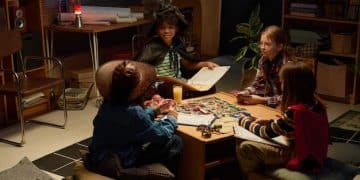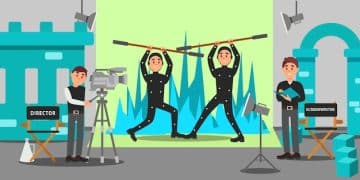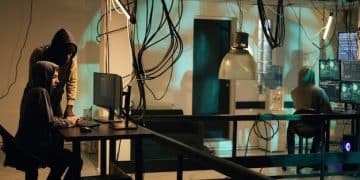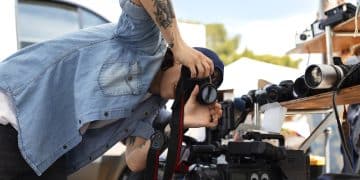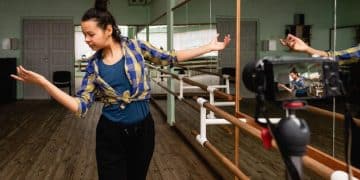The Set Designer’s World: Crafting Finales with Immersive Sets
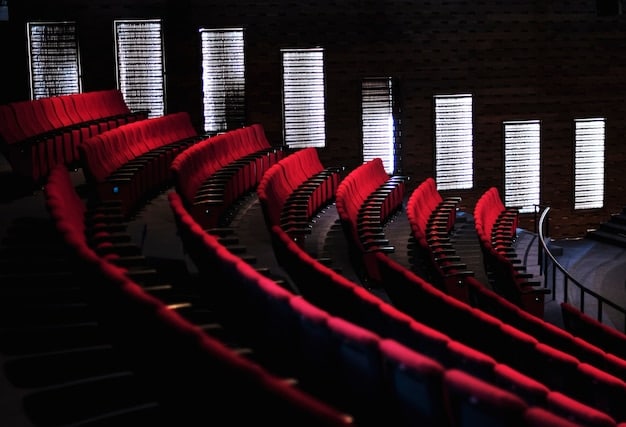
The set designer’s world is a crucial element in creating immersive environments that enhance the finale’s atmosphere, involving detailed planning and execution to captivate the audience.
The magic of a memorable finale often lies not just in the script or acting, but in the immersive environments crafted by the set designer’s world. These spaces are meticulously built to enhance the atmosphere and draw the audience deeper into the story. Let’s explore the artistry and expertise that brings these crucial scenes to life.
Understanding the Role of the Set Designer
The set designer is a vital member of any production team, whether it’s for film, television, or theater. Their role extends beyond simply creating a backdrop; they are responsible for visually telling part of the story. Understanding this role is the first step in appreciating the artistry behind the final product.
A set designer collaborates closely with the director, costume designer, lighting designer, and other key crew members to develop a cohesive and immersive environment. It is important to note that without their vision, the overall impact of the production would be severely diminished.
Key Responsibilities of a Set Designer
The set designer’s responsibilities are both creative and technical, requiring a diverse skill set ranging from artistic vision to practical problem-solving. It is important to note some key characteristics.
- Concept Development: Developing the initial design concepts based on the script and director’s vision.
- Technical Drawings: Creating detailed technical drawings and models for construction crews.
- Material Selection: Choosing appropriate materials, fabrics, and finishes to achieve the desired aesthetic.
- Budget Management: Working within a budget to source materials and manage construction costs effectively.
From the initial concept to the final touches, the set designer is deeply involved in every step of the process. Without their involvement, the production crew would be aimlessly working.
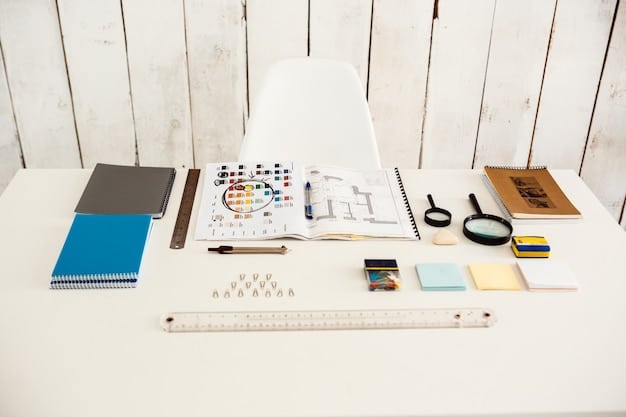
Initial Design Concepts and Collaborations
The journey of creating immersive environments begins with the initial design concepts. Collaboration between the set designer and the director is crucial at this stage. Without the initial collaboration, the team would not know where to start.
During this phase, the set designer interprets the script, researches the setting, and brainstorms ideas to visually represent the story’s atmosphere. The initial meeting is filled with a plethora of ideas and images. Let’s delve into how this might pan out step-by-step.
- Script Analysis: Dissecting the script to identify key scenes, themes, and emotional cues that the set design should enhance.
- Mood Boards: Creating visual mood boards with images, colors, and textures that capture the desired atmosphere for the finale.
- Scale Models: Building small-scale models to visualize the space and experiment with different layouts and design elements.
Effective collaboration ensures that the set design complements the overall storytelling, enhancing the emotional impact of the finale. Without a true collaboration, the vision cannot be unified.
Bringing the Script to Life: Set Design Elements
Once the initial concepts are approved, the set designer moves on to fleshing out the specific design elements. This is where the creative vision takes concrete form through detailed planning and execution. It is important to consider the following aspects.
Here, every detail matters, from the architecture of the set to the placement of props and the use of color. This is an integral part of the process. Without attention to detail, the audience’s sense of a finale will be gone.
Architectural Design Considerations
The architectural design of the set sets the stage (literally) for the finale. This involves planning the layout, structure, and overall visual appearance of the environment. Technical skills are required to ensure the architecture is sound.
- Scale and Proportion: Balancing the set’s scale and proportion to create a sense of realism or exaggeration as needed.
- Spatial Dynamics: Considering how the actors will move within the space and designing the set to facilitate their movements naturally.
- Period Accuracy: Researching and replicating architectural styles appropriate for the story’s historical setting.
The architecture of the set can profoundly influence the audience’s perception of the story, contributing to the emotional weight of the finale. Accuracy is key.
Color Palettes and Lighting Techniques
Color and lighting are powerful tools in the set designer’s arsenal for enhancing the emotional impact of the finale. It’s crucial to understand that color and lighting can change the audience’s perspective.
Carefully selected color palettes and lighting techniques can evoke specific moods and draw attention to key elements on stage. It is essential to work in harmony with the lighting technicians.
Using Color to Evoke Emotion
Choosing the right colors is essential for setting the tone and mood of the finale. Colors have the ability to convey emotion without any exchange of dialogue needed.
- Warm Colors: Using warm colors like reds, oranges, and yellows to create a sense of passion, excitement, or intimacy.
- Cool Colors: Employing cool colors like blues and greens to evoke feelings of sadness, serenity, or mystery.
- Contrast: Contrasting colors to create visual interest and emphasize specific elements within the set.
Color choices should be deliberate and aligned with the emotional arc of the story, enhancing the audience’s engagement. Be careful not to overdo it.
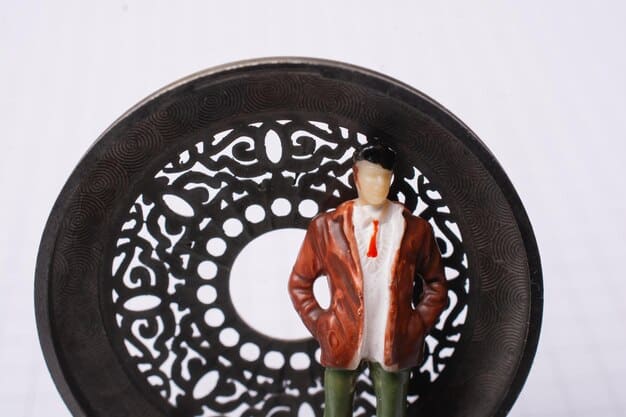
Props and Set Dressing for Authenticity
Props and set dressing are the details that bring authenticity and depth to the set. These elements add richness and texture.
From furniture to decorative items, carefully chosen props can enhance the realism and emotional impact of the finale. It’s important to remember that these props should support the actors and not distract them.
- Historical Accuracy: Ensuring that props and set dressing are consistent with the story’s time period and setting.
- Character Reflection: Using props to reflect the characters’ personalities, backstories, and relationships.
- Visual Storytelling: Incorporating props that symbolize key themes or plot points in the narrative.
The smallest details can make a big difference in creating immersive environments that resonate with the audience. It is paramount to ensure the actors can work with the props seamlessly.
Challenges in Set Design and Overcoming Them
Set design is not without its challenges. Designers often face budget constraints, tight deadlines, and logistical hurdles. Regardless, these challenges should and can be faced head-on.
Creative problem-solving, resourcefulness, and strong collaboration skills are essential for overcoming these obstacles and bringing the set designer’s vision to life. It is essential to remain calm, cool, and collected to provide direction without hesitation.
Common Pitfalls in Set Design
There are several common pitfalls that set designers must avoid to ensure a successful production. These pitfalls are all avoidable.
- Budget Overruns: Managing costs effectively to avoid exceeding the allocated budget.
- Timeline Delays: Sticking to the production timeline and meeting deadlines for set construction and installation.
- Communication Breakdowns: Maintaining open communication with all members of the production team to avoid misunderstandings and conflicts.
By anticipating these challenges and planning accordingly, set designers can navigate the complexities of production and deliver exceptional results. Without excellent planning, the team will fail.
| Key Aspect | Brief Description |
|---|---|
| 🎨 Initial Concepts | Brainstorming and sketching initial ideas for the set design. |
| 🔨 Construction | Building the physical set according to technical drawings. |
| 💡 Lighting | Implementing lighting techniques to enhance the set’s atmosphere. |
| 🎭 Props & Dressing | Adding props and decorative elements for authenticity. |
Frequently Asked Questions
▼
A set designer is responsible for designing and overseeing the creation of the physical environment in which a play, film, television show, or other production takes place. Their work brings the story to life visually.
▼
Set designers work closely with directors to understand their vision for the production. This often involves script analysis, mood board creation, and regular meetings to ensure the set design aligns with the director’s intent.
▼
Essential skills include artistic talent, technical drawing proficiency, an understanding of architecture and design, and strong communication abilities. Budget management skills are also necessary to stay on target.
▼
Color and lighting are vital elements that set designers use to create mood and enhance the emotional impact of a scene. They can draw attention to specific elements, and guide the viewers’ perception.
▼
Common challenges include tight budgets, strict timelines, and the need to collaborate effectively with various team members. Problem-solving skills are crucial to overcoming these challenges seamlessly.
Conclusion
The role of the set designer’s world is vital in creating immersive environments that enhance the finale’s atmosphere. By understanding the complexity and artistry behind their work, we gain a deeper appreciation for the magic of storytelling in visual form. Their contributions are crucial in fully captivating the audience.
